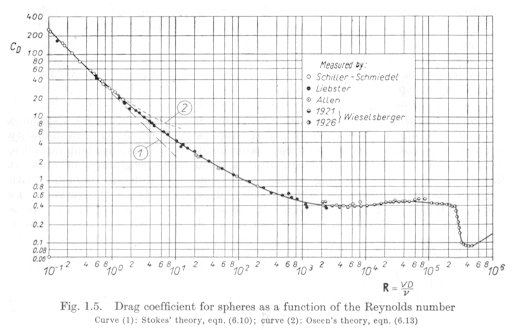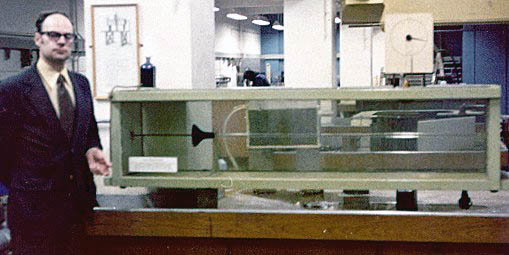Osborne Reynolds
Today, a great Victorian engineer. The University of Houston's College of Engineering presents this series about the machines that make our civilization run, and the people whose ingenuity created them.
Have you ever noticed how, when you walk on wet sand, it momentarily dries out around each footprint? That odd behavior was explained in 1885 by a British engineering professor at the University of Manchester. He was Osborne Reynolds, and he wanted to explain nothing less than the very structure of the universe.
In his later years, Reynolds tried to replace the then-current ether theory with the idea that the universe is filled with tiny granular particles; hence the interest in sand. Well, we've forgotten his granular theory, but not the rest of his work.
Reynolds came from a long line of Anglican clergy in Northern Ireland. He was drawn into his father's hobby of math and mechanics, and he was talented. He was 25 when Manchester made him a professor. We know him best for his work on the flow of fluids -- like water, air, oil or steam. His Reynolds Number is a ratio that shows the effect of viscosity in a flow. Compute it, and you'll know the nature of the flow before you see it. The Reynolds number for a BB sinking in honey is less than one. For a reed in the breeze it might be a hundred. For a golf ball in flight it's over 200,000.
From those numbers you expect to see no hint of irregular fluid motion as the BB creeps through viscous honey. You expect the reed to sway rhythmically as air peels off in vortices behind it. The golf ball is dimpled because, at that Reynold's Number, dimpling enhances turbulence. It narrows the wake and increases the ball's travel by fifty percent.
Reynolds' genius gave us much more. He also worked in electricity, magnetism, and astrophysics. But no book on fluid flow fails to mention Reynolds' name early and often. It was he who explained how an oiled bearing lets a shaft ride on a cushion of oil without touching metal. Reynolds first figured out how to use mathematics to describe the flow of oil between the shaft and the sleeve.
A large painting hangs in the engineering building at Manchester. It shows an aging Reynolds with something like a reserved smile playing about his lips. In his lap he holds a shallow bowl filled with marbles. It's a demonstration of his ideas about the granular substrate of the cosmos. But his gift to us lies elsewhere -- under the hood of your car, in the motion of a supertanker, in the human aorta.
So what about the way wet sand dries out when you walk on it? Reynolds realized that lapping waves bring sand to an optimal packing with grains as close together as they can get. Stepping on it disturbs the packing and creates more empty space. Water flows away from the surface to fill the spaces.
That behavior is important when we handle any kind of particulate matter, but Reynolds wasn't thinking about commerce. He simply had a mind that stayed in constant motion -- a mind that quite literally saw the world in a grain of sand.
I'm John Lienhard, at the University of Houston, where we're interested in the way inventive minds work.
(Theme music)
Kargon, R. H., Reynolds, Osborne., Dictionary of Scientific Biography, Vol. XI, New York: Charles Scribner's Sons, 1975, pp. 392-394.
I am grateful to listener Ben Mathes for urging me to do a program on Reynolds.
To calculate the Reynolds Number, Re, multiply the velocity of a fluid flow relative to a body by a characteristic dimension of the body (a width or a diameter) and divide by the kinematic viscosity of the fluid.

The drag coefficient for a sphere as a function of Reynolds Number, as given by Schlichting, H. Boundary Layer Layer Theory. 4th ed., McGraw-hill Book Co., 1960.
Note added March 18, 2011. A relative of Osborne Reynolds, Deborah Reynolds, writes to point out an error in my text above. Reynolds came from a long line of clergy, but not Irish clergy. His father was British, and only in Northern Ireland for seven years when he was born there.

Reynolds original apparatus for demonstrating the onset of turbulence being operated by the author at the University of Manchester in 1975.

Example of Reynolds dryout phenomenon on a beach
(Photo by John Lienhard)